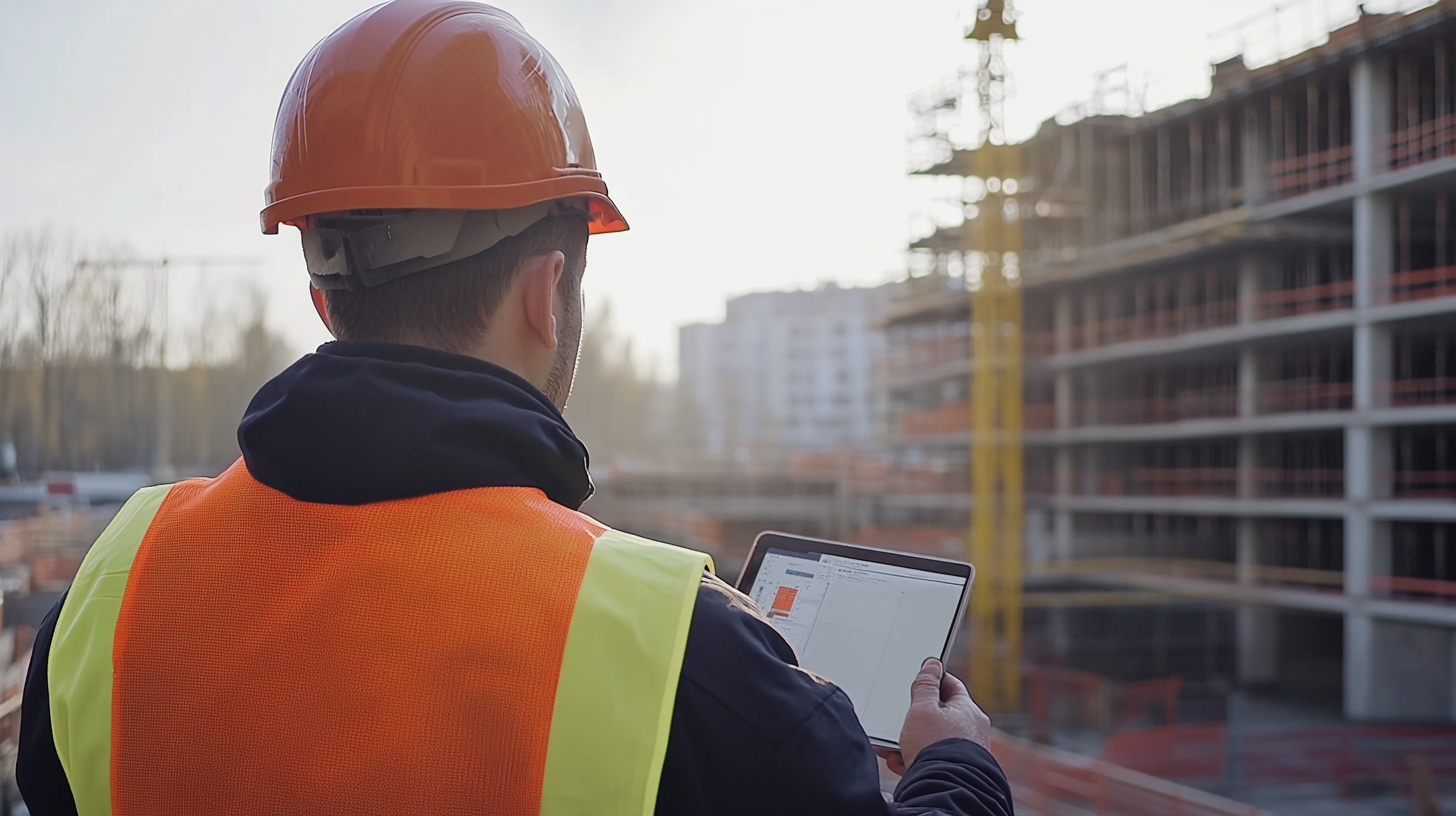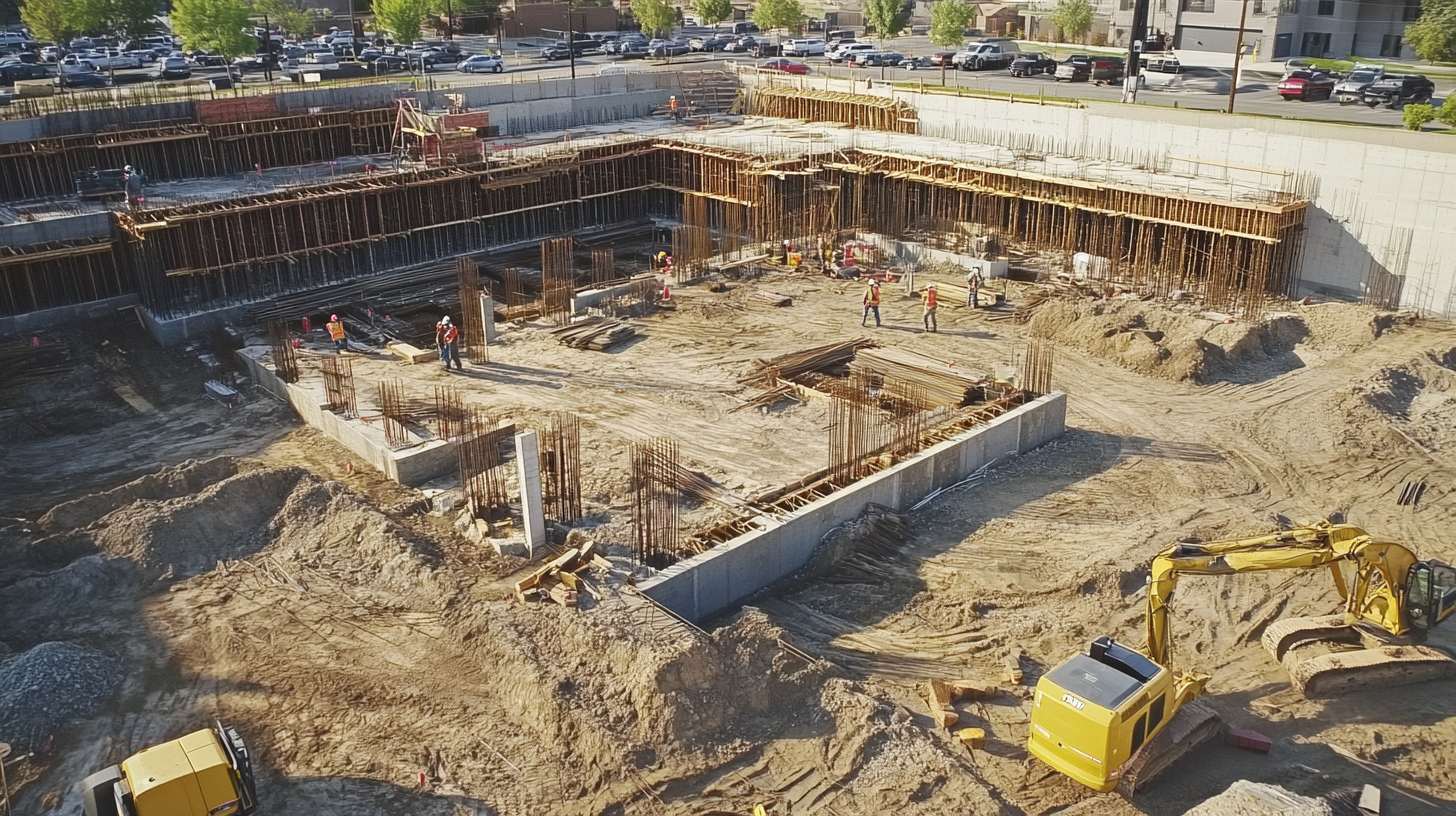Transforming Construction Sites: What Innovations Drive Efficiency and Sustainability in 2023?
They have been available for research and studies up till October in the year 2023.
Ironically, the onset of 2023 finds construction at the dawn of a new age-one with renewed emphasis on efficiency, sustainable practices, and particularly methods of construction. The traditional construction site has always evoked images of inefficiency and environmental devastation. However, all kinds of innovations have changed the face of construction, propelling it toward a more efficient and eco-friendly future. This blog aims to bring to the readers some of the high-level modern guts redefining construction functions, such that their present needs will also be met for future generations.
In this fast-moving and constantly evolving environment, adaptation to innovations can no longer be optional but rather an immediate necessity for construction constructions. Everything from further development project management software that is such in making communication more straightforward to green materials helping in waste reduction is currently changing site operations. As we get into these emerging trends and innovations aimed at driving efficiency and sustainability, we shall see how much the changes hold in store for the level of change being brought about in modern construction with regard to what is possible in construction sites in this new age.

Emerging Technologies Revolutionizing Construction Site Operations
Construction sites have embraced cutting-edge technologies, thereby escalating the possibility for efficiency and sustainability in 2023. According to the report by McKinsey Global Institute, digital technologies could generate global construction productivity unlocking of $1.6 trillion by the year 2030. Innovations such as AR and IoT are leading the charge in this technological revolution together with other tools never seen before in the enhancement of site operations. In simple terms, you can now visualize projects with the help of AR in real-time along with superimposing digital information on physical environments. With this, better training and safety were accomplished along with greater teamwork, thus drastically reducing errors. IoT integration in construction ultimately assists in effective resource management, equipment performance monitoring, and material usage tracking. In a recent research analysis, it was determined that IoT integration reduces operational costs by up to 20%, thus signifying its importance for increased efficiency. Generative AI touches upon the heart of the revolution by allowing a hitherto unreachable optimization of project planning and design workflows. The technology generates multiple design scenarios from given project requirements, allowing for the selection of the most effective and sustainable option by the team. By embracing these high-end technologies, the construction industry has the potential for greatly improved timelines and cost management, forming a pathway for resilience and sustainability.

Sustainable Materials: Reducing Environmental Impact in the Building Process
In the present day, the construction sector is rushing to transform itself considerably as per the drumbeat summons for sustainability and efficiency. This happening in Spain is Grupo Empresarial S.L., opened by Ana Blasco and Javier de Juan Roncero in 2019, to bring this movement forward. Their commitment to net-zero emissions clearly indicates the vital role that the building supply chain plays in the efforts for reducing climate change. According to the Global Carbon Project, about 38% of the total carbon emissions worldwide are caused by the construction sector. Hence sustainably adopting practices in the industry is one of those pressing concerns that will be relevant today and far beyond.
Using sustainable materials is one of the key strategies in this direction. Such materials will drastically reduce the environmental effect of construction, and focusing on alternatives that are more eco-friendly. Buildings have been shown to consume almost half of the entire energy supply in the world according to the McKinsey Global Institute, which means there is a massive saving potential for any application of sustainable material and technology. Innovations in recycled products, bio-based materials, or energy-efficient designs can have both waste minimization and lower operating costs across the lifespan of buildings.
Thus, using these sustainable materials into the framework of construction can further optimize the efficiency of overall projects. For example, modular construction techniques using pre-fabricated, sustainable forming elements reduce construction time and labor costs, and result in a smaller carbon footprint. As cities spread further, the need for innovative solutions becoming even more apparent than ever to develop building practices that are sustainable and efficient in the time of their completion has multiplied. Group Empresarial S.L. is one of the many companies that will lead to transforming this industry into a more sustainable future.

The Role of Automation and Robotics in Enhancing Worker Safety
The construction industry is reshaped in 2023 as a major transformation is underway driven by automation and robotic technologies. These advancements are seen to promote efficiency and, most importantly, worker safety on construction sites. The McKinsey Global Institute suggests that 60% of the various activities in construction can be automated, increasing productivity and lowering injury rates. The idea of automation itself is an indicator of how technology is helping maintain the transition from conventional construction methods.
Automated machines are employed for surveying sites, laying bricks, and everything in between: the drones and robotic arms. As stated in a recent report by the International Federation of Robotics, construction robots can offer cost savings of up to 30% on labor, thereby ensuring better precision. For example, with autonomous drone surveys, it is straightforward to detect hazards on the site, making safety assessments speedier so as to minimize human exposure to unnecessary risk. Thus, with the evolution of these technologies, not only does it improve workflow, but it creates a safer working environment for human workers who can now engage in more complex and creative tasks.
Furthermore, robotics extends further into wearable tech, including smart helmets and exoskeletons, which help diminish physical strain experienced by the workers. The National Institute for Occupational Safety and Health found that exoskeletons reduced the chances of musculoskeletal injuries by 50%. Thus, the industry comes to terms with innovations, and the synergy between automation and human skill will more likely create an inviting atmosphere for safety and efficiency along sustainable lines. This more holistic perspective benefits both parties, contractors and workers, and builds resilience in the industry.

Data Analytics and IoT: Optimizing Resource Management on Site
Occupying a special place in 2023, the construction business is discovering unprecedented changes ushered in by the world of data analytics and the Internet of Things (IoT). Concerning construction, these technologies are enabling the better management of resources, and driving efficiency and sustainability. As the projects become more and more complex, data analytics, being an enabler of real-time insights, gives the stakeholders better decision-making capabilities and efficiency over the resource allocation processes.
The growing attention towards data analytics can be seen in the bigger sizes of the oil-and-gas data management market, likely at $27.3 billion by 2024, and the result for having a remarkable CAGR of 12.3% expected from 2025 to 2034. This has been taken as a trend showing the shift of the sector in implementing technologies like AI and IoT toward managing large volumes of data, streamlining operations, and minimizing costs. Conversely, the surge of IoT gateway devices is forecasted to exceed $11.1 billion by 2023, thereby fuelling the demand for real-time data analysis across multiple industry applications, such as construction.
With IoT solutions being accepted in the construction sector, the integration of smart technologies becomes paramount into project frameworks. This integration will help in monitoring resource usage and enhance collaboration between teams, thereby mitigating waste across all facets of the project and making it sustainable. In the fast-changing milieu of construction, the cannot-be-similar interaction between data analytics and IoT is transforming site operations and setting good standards for efficiency and environmental wellbeing-a pathway towards a brighter tomorrow.
Collaboration Tools for Streamlining Communication and Project Tracking
Collaboration tools now define the new intelligentsia, which would facilitate and grow into efficiency and sustainability in modern construction as enormous strides were made with increased construction complexity. Thus, modern teams need seamless communication channels to enhance coordination and mitigate delays. Whether for instant updates, shared documentation, or access to centralized information, these platforms are vital in ensuring every person involved has clarity on the project milestones and any change happening.
An advanced project tracking software can easily do wonders for workflow management. It allows project teams to easily define timelines, use resources most efficiently, and dynamically monitor progress through the elimination of silos existing with different stakeholders ranging from architects to contractors in executing construction sites using a common strategy, minimizing and streamlining operations through loss of misunderstanding. Besides, it integrates mobile technology through which field operators can relay updates straight from the site thus leading to agile problem solving.
It also creates sustainability at a much higher level due to better collaboration. Making decisions more possible and informed, these tools bring people together on one platform for the planning and implementation of technically sound resource-conserving practices. For instance, collective assessment of materials, waste management, and energy-efficient methods is explicitly considered through-this will embed sustainability at every project stage. With the new year running toward its end, these modern collaborative technologies have become a norm any progressive construction firm needs to embrace to thrive in the ever growing complexities that will come into play in 2023.